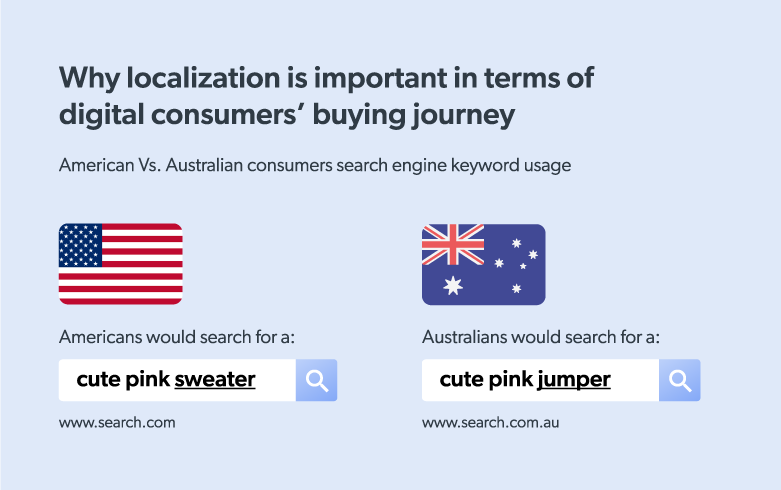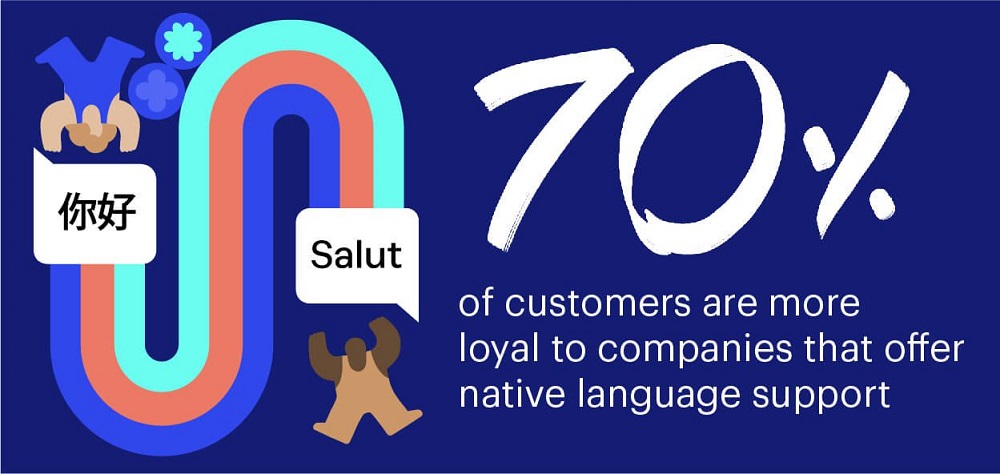Cross-border selling has many benefits, but it isn’t a walk in the park. You’ll need to pay attention to some key elements of international eCommerce. For instance, taking into account the differences in culture, currency, and legislation.
Spot cross-border opportunities
First, identify gaps in the market. For example, a product that’s proven unpopular in your own country might be in high demand elsewhere. This gives you an opportunity to shift slow-moving or obsolete stock. There may be a customer base in developing countries, where people don’t have so much choice locally.
You can also tap into different market cycles around the world. If your main product is summer apparel, you’ll see a dip in sales come winter. But with cross-border eCommerce, you can sell those products year-round. It’s always summer somewhere!
International sales also suit eCommerce businesses in niche markets. For example, specialty food and beverages. You could target expats who want a taste of their homeland. Or sell to travelers who crave a delicacy they once experienced on holiday.
Assess and identify target markets
Now, take the ideas you came up with in the first stage. Identify the areas of the world where you think there’s a ready-made market. You’ll need to carry out research to discover if consumers there actually want your product. And you'll need to decide how best to market it to them.
Before committing to a particular country, it’s vital that you’re aware of its key stats, such as:
- Population
- Demographics
- GDP
- Consumer behavior and spending
- Trade patterns.
Visit the US Government’s Country Commercial Guides and Research Foreign Markets page to learn more.
Now you can decide if cross-border selling is viable for your online business. Ask yourself if you can compete with local products and pricing.

Image sourced from statista.com
Develop international logistics
Selling and shipping in your own country requires robust logistics. And it’s even more challenging for cross-border sellers. There’s a lot to consider, such as delivery times and costs. You must make sure your inventory and order management systems can handle increased orders.
Your customers expect fast shipping. That's the case whether their cross-border purchases arrive by land, sea, or air (and you’ll need a clear policy for returns and refunds). You could work with dropshippers in various countries. Or partner with a third-party logistics company (3PL) specializing in international fulfillment.
If you’re making the products in-house, consider small business manufacturing software. This will help you overcome logistical and supply chain challenges. You can manage fluctuations in purchasing, production, and shipping. And you can respond more quickly to changing customer demands.
Adhere to licensing regulations
Each country has different laws and regulations. To be successful in cross-border trade, you need to understand them. These cover imports and exports, tariffs and taxes. They can affect the price of goods as well as the shipping cost.
There may be product restrictions on items such as medication, food, and alcohol. Product safety standards also vary between countries. If you break the law or fail to pay the correct duties, the authorities may delay or confiscate your goods. You may also incur financial penalties.
With all the focus on overseas tariffs, it’s important that you don’t overlook your own business taxes! As a startup owner, it's a good idea to use self assessment accounting software. This will help you file correctly and on time, whether you’re dealing with HMRC or the IRS.
Adapt website for global audiences
You’ll need to localize your website for your new target audience, by adapting features such as:
- Product descriptions
- Product selection
- Blogs and other written content
- Images and videos
- Pricing
- Terms and conditions

Image sourced from brightdata.com
Think about regional variations for apparel sizing, for example. A size 8.5 shoe in the US would be a 6 in the UK and 39 in Europe. You may also want to develop a specific pricing strategy for each country.
Most customers will feel more comfortable paying in their own currency. It's important to offer that option alongside major world currencies. You can install an application that automatically converts currencies for ease of use.
Translating website content can be tricky, as not everything translates exactly. When you’re writing, use simple language that’s easy to translate. Avoid slang terms or jokes that may not work in other countries. It’s a good idea to work with a localization team in the relevant region.
Establish secure payment solutions
Preferred payment methods for cross-border transactions can vary a lot between regions. Do some research to identify the most popular methods in your target countries. This might be card payments, digital wallets, or Google Pay.
Customers will expect to see options that use local payment networks and their own banks. In some countries, customers may not have access to some digital payment methods. It's important to offer several choices. Make sure you clearly display shipping fees and taxes during checkout. This will help to avoid cart abandonment.
Whichever methods you offer, make sure you use a reputable payment processor. 60% of US and UK businesses face cross-border payment fraud. Credit cards are especially vulnerable. It’s also wise to put in place anti-fraud measures such as address verification systems.
Adapt multilingual customer service
Another consideration for cross-border commerce is customer support. If you’re targeting a range of countries, you’ll need the ability to answer queries in several languages. If your agents don’t understand what customers are asking, it will lead to frustration.
One solution is to hire native-speaking support agents from different countries. You could set up a virtual customer service desk connected by technology. Or, if you have the budget, you could outsource customer support to a team based in the relevant country.

Image sourced from intercom.com
There are also chatbots that can understand different languages and translate text automatically. Don’t forget to provide your FAQs and a knowledge base in various languages.
Mitigate currency exchange risks
Fluctuations in exchange rates can impact your financial position. This becomes more of an issue the more currencies you deal with. It can be difficult and time-consuming to keep up with these changes. Especially during an economic downturn.
Multi-currency sales also mean it’s all too easy to make mistakes with your accounts. For example, say you’re a US company selling in Japan and India. You’ll receive payments in Japanese yen and Indian rupees. You'll have to convert them all to US dollars for reporting on your financial statements.
You may also find hidden costs associated with converting currencies. Make sure you understand all the financial implications before you start cross-border selling.





